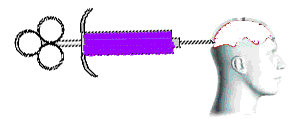This is a shot of me editing our music video, this is the hippy side of our video where our artist is in a field (forty hall) with a guitar.
Tuesday
Magazines
Monday
Filming
Today our group went filming for the second half of our music video, we filmed the 'business woman' part of it and these are some of the locations we filmed up London, it was very cold and windy but we got all of the shots we needed before it became unbearable to film in.
Tuesday
Band Name - Vlog
This is a vlog of our group discussing our band name and we settled on Daisy and The Chains. We decided this because it sounds half hippy half nature and has a play on words with Daisy Chains - with the moral of our music video being anti-technology.
Monday
Questionnaire
This is my questionnaire i created which i will recieve feedback on from our target audience once the music video is complete
Sunday
The Three Main Theories About Media Audiences:
Hypodermin Syringe/Effect Theory
Dating from the 1920s, this theory was the first attempt to explain how mass audiences might react to mass media. It is a crude model and suggests that audiences passively receive the information transmitted via a media text, without any attempt on their part to process or challenge the data. Don't forget that this theory was developed in an age when the mass media were still fairly new - radio and cinema were less than two decades old. Governments had just discovered the power of advertising to communicate a message, and produced propaganda to try and sway populaces to their way of thinking.
The Hypodermic Needle Model suggests that the information from a text passes into the mass consciouness of the audience unmediated, i.e the experience, intelligence and opinion of an individual are not relevant to the reception of the text. This theory suggests that, as an audience, we are manipulated by the creators of media texts, and that our behaviour and thinking might be easily changed by media-makers. It assumes that the audience are passive and heterogenous. This theory is still quoted during moral panic by parents, politicians and pressure groups, and is used to explain why certain groups in society should not be exposed to certain media texts (comics in the 1950s, rap music in the 2000s), for fear that they will watch or read sexual or violent behaviour and will then act them out themselves
Two-Step Flow
The Hypodermic model quickly proved too clumsy for media researchers seeking to more precisely explain the relationship between audience and text. As the mass media became an essential part of life in societies around the world and did not reduce populations to a mass of unthinking drones, a more sophisticated explanation was sought.
Paul Lazarsfeld, Bernard Berelson, and Hazel Gaudet analysed the voters' decision-making processes during a 1940 presidential election campaign and published their results in a paper called The People's Choice. Their findings suggested that the information does not flow directly from the text into the minds of its audience unmediated but is filtered through "opinion leaders" who then communicate it to their less active associates, over whom they have influence. The audience then mediate the information received directly from the media with the ideas and thoughts expressed by the opinion leaders, thus being influenced not by a direct process, but by a two step flow. This diminished the power of the media in the eyes of researchers, and caused them to conclude that social factors were also important in the way in which audiences interpreted texts. This is sometimes referred to as the limited effects paradigm.

Uses and Gratification
During the 1960s, as the first generation to grow up with television became grown ups, it became increasingly apparent to media theorists that audiences made choices about what they did when consuming texts. Far from being a passive mass, audiences were made up of individuals who actively consumed texts for different reasons and in different ways. In 1948 Lasswell suggested that media texts had the following functions for individuals and society:
- surveillance
- correlation
- entertainment
- cultural transmission
Homeland
After watching the opening to Homeland, they have a montage of clips at the beginning of iconography of the programmes. We have used the opening as an inspirational video as we are also looking to include the montage of clips at the beginning of our music video however ours will signify and represent the 60's and 70's and its iconography.
Final Cut Pro



These are some of the images we have uploaded into Final Cut Pro. We have a shot of an eye opening with a focus pull on it, when the eye finally comes into focus we hope to have this flower appear in the pupil. The flower however looks too 'perfect' or 'shaped' to go in the eye so we have deiced to upload it to paint and cut around it to give it the more jagged affect and then place it in the eye.
Subscribe to:
Posts (Atom)









